Kino Stitches: Celebrating Other-Worldly Film Costume Designs
I can't stop thinking about the costumes in these movies.
When you think of the great science fiction and fantasy costumes of film history, what movies come to mind? The Lord of the Rings? Star Wars? Perhaps a few favorites more personal to you, Mad Max or Alice in Wonderland, maybe?
With the 2024 Oscars inching closer and closer, I’m reminded of how often period films win out the costume design category at each year’s Academy Awards. To be clear, fantasy and science fiction genre films are second in line, but many of the most ethereal, otherworldly, and magical works of costume design were never even nominated. Today, I felt compelled to share my thoughts on three weird and wondrous stories and how their costuming plays a vital role in their allure.
Poor Things (2023)
Brought back to life by an unorthodox scientist, a young woman runs off with a lawyer on a whirlwind adventure across the continents. Free from the prejudices of her times, she grows steadfast in her purpose to stand for equality and liberation.
Yorgos Lanthimos's Poor Things is quickly becoming one the most divisive films of the year, but one thing almost everyone can get behind is its top-tier fashion.
The first thing I notice when examining the costume design in Poor Things is these stunning – if jarring – leg-of-mutton sleeves. Puffy, large, and certainly in charge, these sleeves help to shape the film’s lead, Emma Stone’s Bella Baxter, as a playful and confident specimen.
I say specimen because the film is part science-fiction. Willem Dafoe’s Frankenstein-influenced Dr. Godwin Baxter has been through the wringer in terms of medical experiments, utilizing a variety of whimsical and disgusting medical gadgets to operate his internal organs. His character’s costume design is more gentlemanly and traditional, but further inspection uncovers custom-tailored shirts that allow for various tubes to be plugged and unplugged from his torso as necessary.
In fact, body parts play a vital role in both the film’s plot and attire: When Bella learns to dance, she sports a pink skirt that, on camera, appears to be nearly flesh-colored, as-if to symbolize her legs being freed to flail to the beat.
Though loosely set in the late 1800s, costume designer Holly Waddington integrated a variety of time periods, drawing inspiration from 1960s boots, 1930s tap shorts, and her own modern-day young children, who often like to take their clothes off. One can imagine Bella ripping off a fussy, heavy, floor-length skirt in favor of running around in lighter fabrics, whether society considers her remaining outfit “underwear” or not.
In keeping with this theme, Bella is almost always dressed in light fabrics like silk, organza, and tulle, and often keeps at least some of her limbs uncovered. Meanwhile, Mark Ruffalo’s womanizing character utilizes pinstripes, as well as shiny, metallic fabrics and accents, ostensibly designed to attract a mate. In the case of Poor Things, the ingredients are key to the recipe and final result.
Perhaps what I liked most about the film’s costume design is what I liked most about the film itself: This is a story about approaching life with fresh eyes and curiosity. Lanthimos and Waddington clearly approached their science-fiction genre and loose time period with fresh, curious minds, and this joie de vivre in the craft sparkles on the screen.
The Fifth Element (1997)
In 2257, a taxi driver is unintentionally given the task of saving a young girl who is part of the key that will ensure the survival of humanity.
Most films hire career costume designers to work on their films, so when Director Luc Besson hired French couture fashion designer Jean Paul Gaultier to create the entire costuming in the science fiction classic The Fifth Element, the fashion world took note.
The most memorable costume in the film belongs to Milla Jovovich’s Leeloo, a human embodiment of the elusive “fifth element” sought after in the film. Escaped fresh from a 23rd-century government laboratory, Leeloo dons white, geometric garb supposedly made of restraint straps from the lab facility for much of the film. When she finally changes, she wears some of the funkiest, Y2K-futurism-chic orange suspenders captured on film. Given her character is supposed to be the best thing for humanity since sliced bread and flying cars, it makes sense that her character has some of the flashiest outfits.
By contrast, almost all men in the film are portrayed as weak, though their outfits are nothing short of eye candy. Some men are portrayed as effeminate, as is the case with cheetah-print-clad broadcasting personality Ruby Rhod, and others are portrayed with blood flowing away from their brains, falling into traps of sex appeal.
As is to be expected, the film’s misogynistic issues unfortunately bled into the costume design quite a bit. Employees like flight attendants and McDonald’s workers are played by gaggles of women dressed in oversexualized looks. This served the plot of course: Our story’s hero – Bruce Willis’s Korben Dallas – looks cool as hell. His orange muscle tanks and strappy black outerwear are dirty but form-flattering. While this movie doesn’t pass the Bechdel test, its looks would certainly pass a cost-per-wear test for many a savvy dresser, should the filmmakers ever mass produce these looks for public consumption. (Maybe for a 30th-anniversary re-release in 2027? A girl can dream!)
The pièce de résistance comes with Gary Oldman’s Zorg, the head of a weapon’s production operation and certified synthetic accessories lover. From his transparent plastic fascinator headpiece that lines his jet-black hair to his plastic suit jackets that make six-inch heels look comfortable, Zorg is a man who puts looks over utility. He wants pinstripes and he wants pizazz. He likes flashes, bangs, and pops in his guns just as much as he likes them in his clothes. While he is a villain in this story, his wardrobe transcends good vs. evil.
Similar to Poor Things, the aspect that really makes The Fifth Element’s costumes stand out is the material: Plastic headwear, ornate armor, rubbery accessories, spandex-influenced tops, and synthetic metallic fabrics are everywhere. In my humble opinion, I think this film truly helped solidify the look and feel of early-2000s-era futurism.
Big Fish (2003)
Throughout his life Edward Bloom has always been a man of big appetites, enormous passions and tall tales. In his later years, he remains a huge mystery to his son, William. Now, to get to know the real man, Will begins piecing together a true picture of his father from flashbacks of his amazing adventures.
At the crux of Big Fish is a debate familiar to us all in 2024: What is the “truth”? In a film where the line between reality and fantasy is subtly and masterfully blurred, costumes enhance every shot.
In the modern-day “real world”, the hospital rooms are drab, and the clothing the lead characters wear is boring and recognizable, as if the garments were pulled from any strip mall in America. But when pulled into the half-fantasy recollections of Edward Bloom, the world is colorful, dreamy, and bright. Costume designer Colleen Atwood was tasked with creating looks that felt both authentically vintage and a little over the top.
In the film, Edward has a penchant for… shall we say emboldening truths in his imagination. What’s more, he’s morally at peace with this way of recollecting, so long as the feeling of the memories rings true. A true “no thoughts, just vibes” kind of man.
Following this logic, while true time-period accuracy wasn’t necessary for the costuming in the 1940s-70s sequences, the feeling of the period had to be preserved.
Southern gothic influences in tow, Atwood created flowing, blue coquette dresses with yellow lace accents for Sanda, Edward’s love interest, perfectly complementing the surrounding blue sky and yellow flowers. Circus ringmasters and performers wear perfectly tailored outfits with lush red velvets and color-coordinated accessories. Danny DeVito’s circus ringleader sports a top hat three sizes the height of an ordinary cap, compensating for his height and making his scenes all the more fantastical. In Edward’s memories, not a hair is out of place, let alone any sight of a mismatched sock.
These fantastical outfits would never pack the punch they do if not for the near colorless, washed-out button-downs and blue jeans of reality. The disparity is stark: Compared to the vivid memories of a young Sandra’s bright blue gingham dress, William’s modern-day gingham button down feels just as insane, as if real life took a saturation slider and dragged it to near zero. When juxtaposed with works like Beetlejuice, Edward Scissorhands, and Charlie and the Chocolate Factory, it’s safe to say you’ve never seen Tim Burton’s production design so restrained.
Fittingly, it is only in the film’s final scene that we see these two styles of costume and two color palettes marry. If this stylistic marriage had come any earlier, I’m not sure if I’d still sob as hard at the ending. Adding color to the drabbest of situations was the main element of this father-and-son relationship, and though it was frustrating at times, it was also beautiful. Tim Burton, I beg of you, please give this style of filmmaking another whirl!
Credit: Each plot synopsis comes from Letterboxd via TMDb.

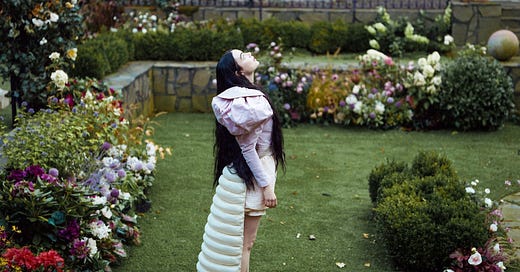




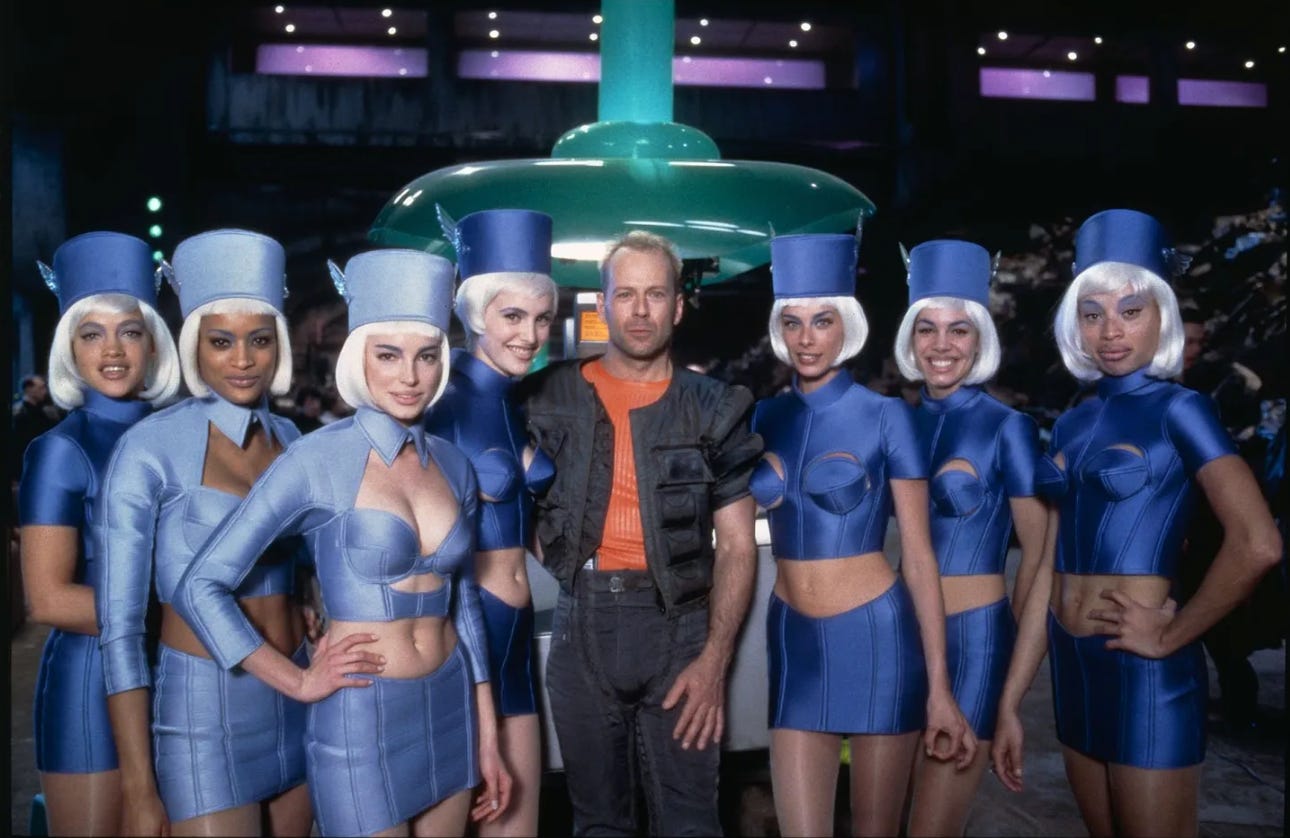
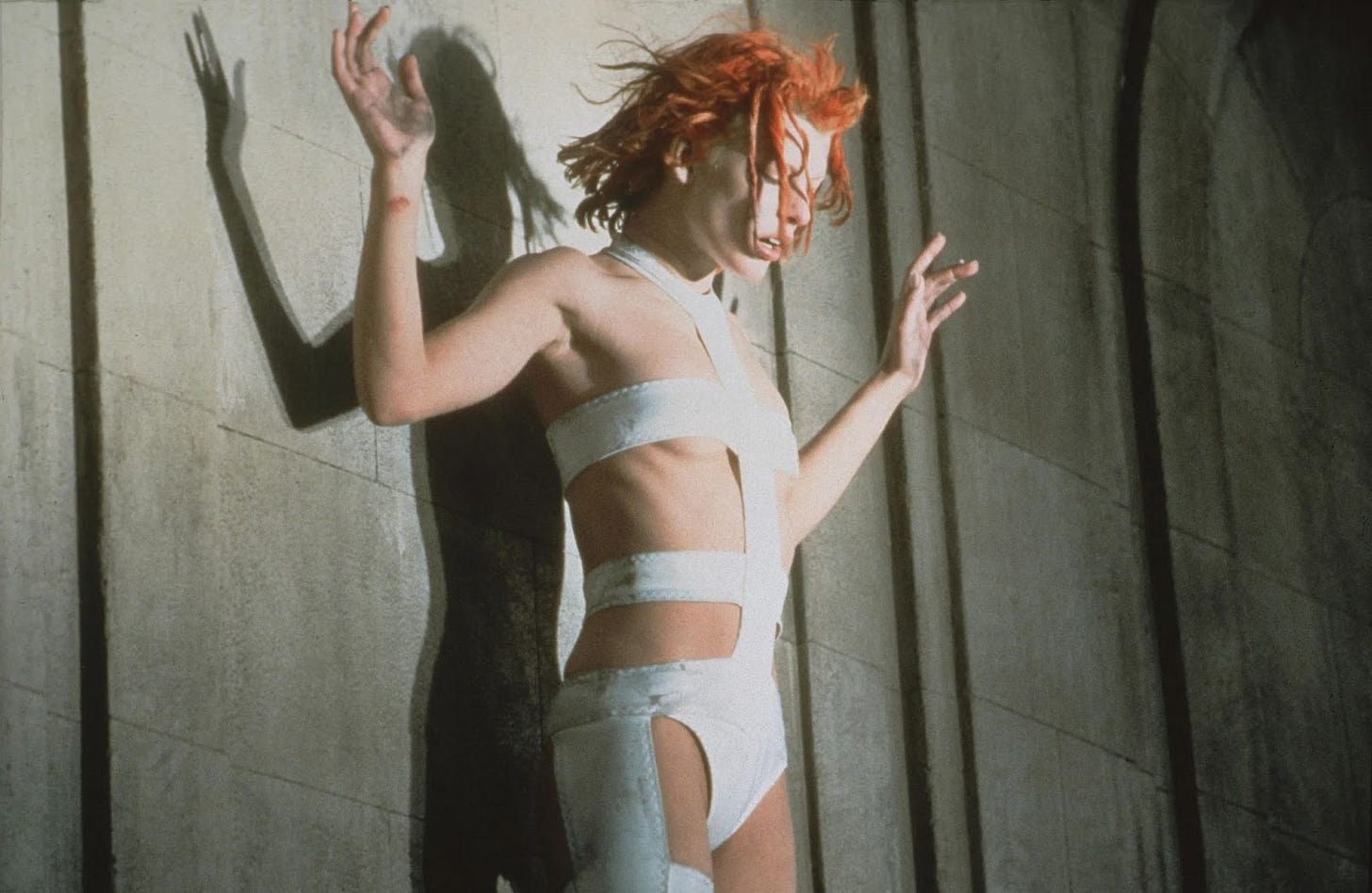

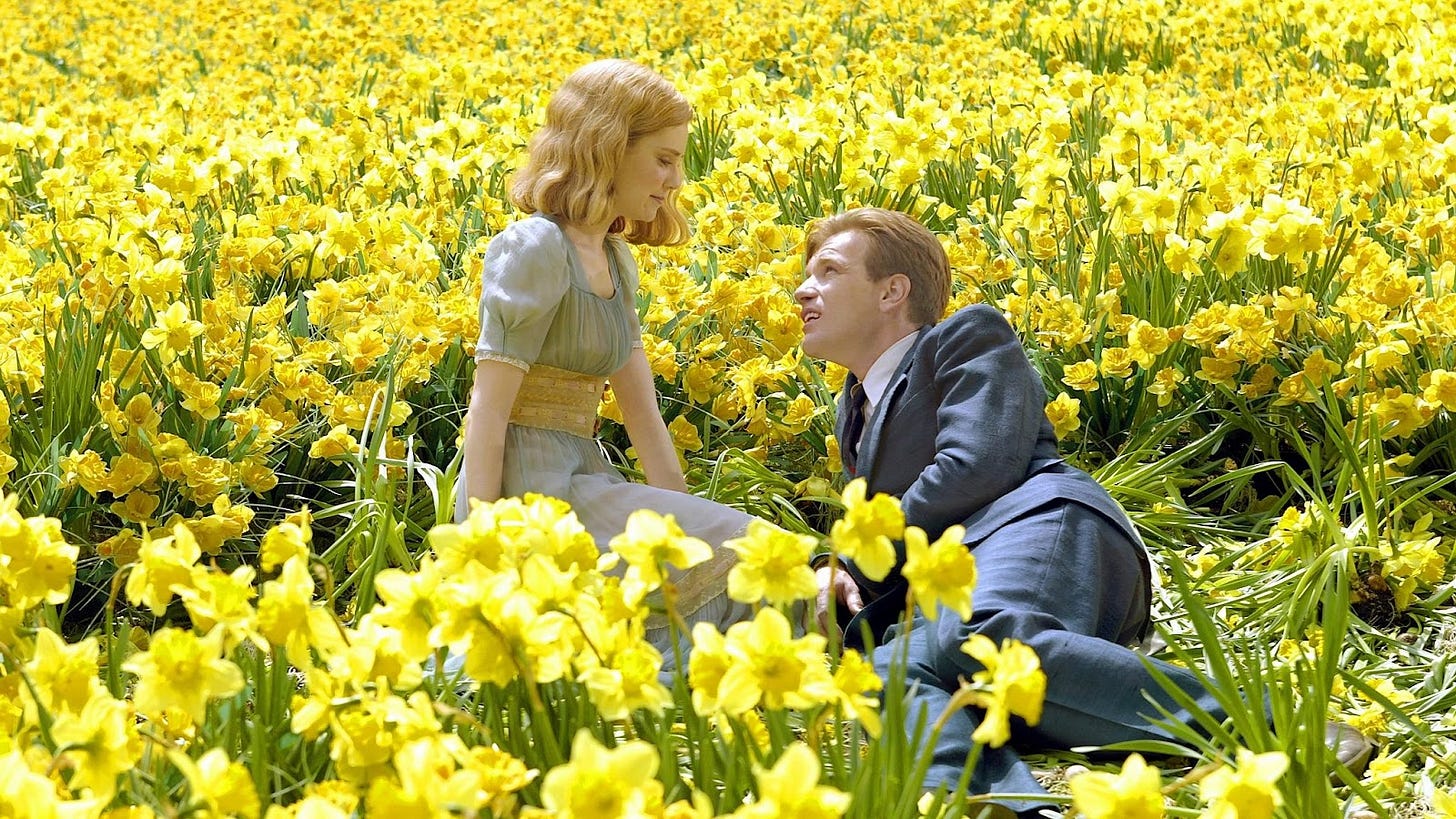
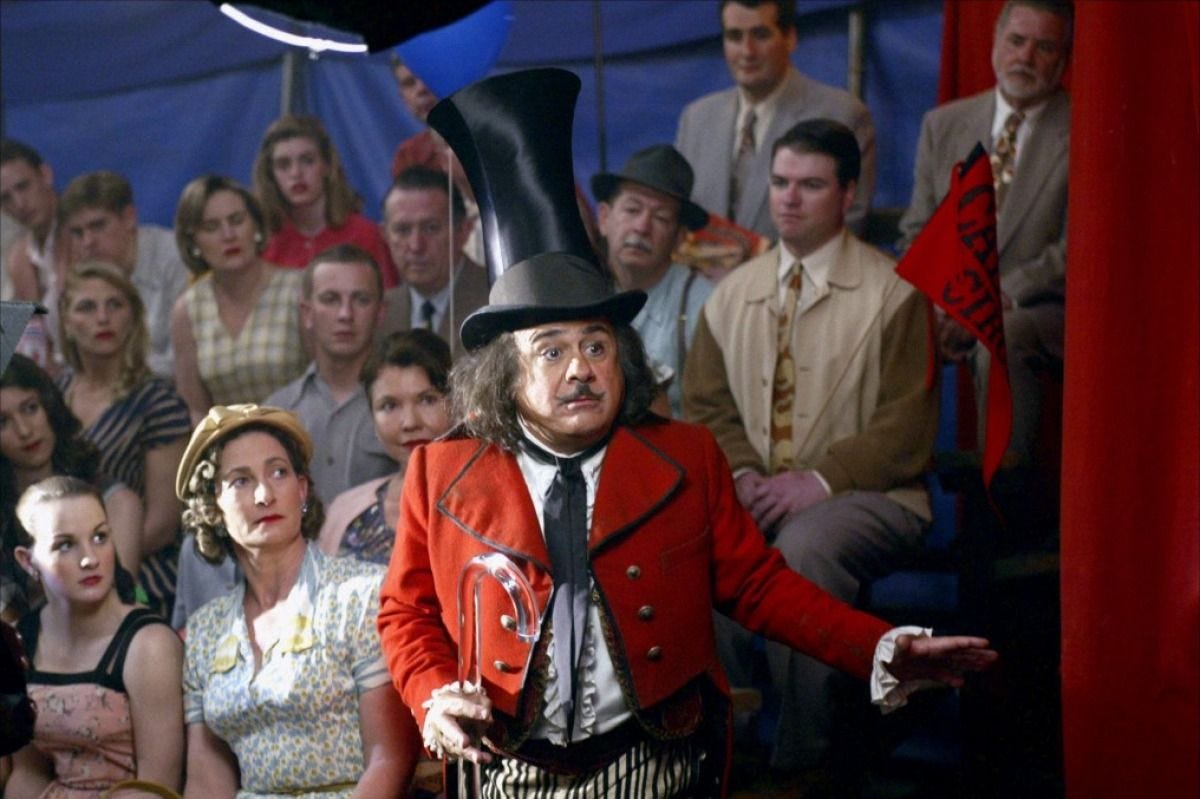
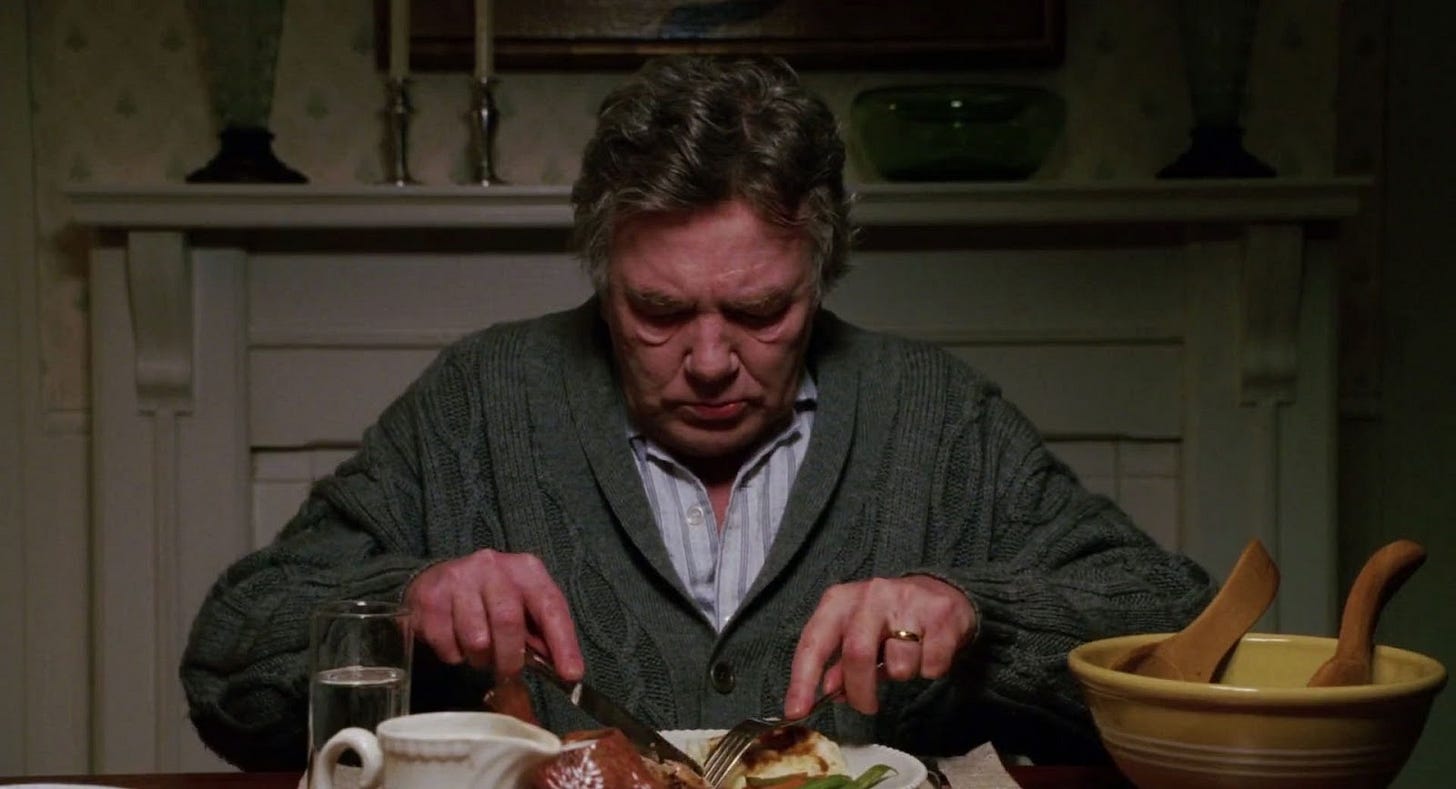
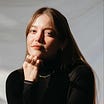
This was such an honor to write! I'm curious to hear what other other-worldly costume designs people are interested in learning more about?